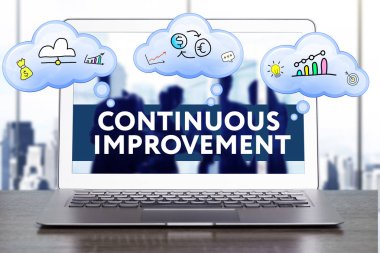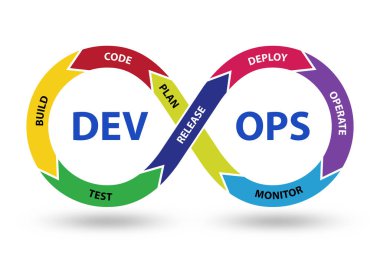The Importance of Continuous Integration and Continuous Delivery (CI/CD) in Digital Acceleration

In today’s fast-paced digital landscape, organizations are under constant pressure to innovate, release products quickly, and adapt to changing market demands. Continuous Integration (CI) and Continuous Delivery (CD) have emerged as key strategies for speeding up the software development lifecycle, enabling teams to accelerate product delivery while maintaining high-quality standards. These practices are vital to digital acceleration, helping companies stay competitive by ensuring faster deployment, real-time updates, and a seamless workflow.
In this blog, we’ll explore the significance of CI/CD pipelines, how they contribute to digital acceleration, and the tools and strategies that engineering teams can adopt to implement them effectively.
How CI/CD Pipelines Speed Up Product Development and Delivery
CI/CD pipelines serve as a foundation for automating the software development process. These practices enable development teams to make frequent, reliable code changes, test them efficiently, and deliver new features quickly. Here’s how CI/CD accelerates the digital product development lifecycle:
1. Continuous Integration (CI): Real-Time Collaboration CI focuses on ensuring that all code changes are integrated into a shared repository frequently—sometimes multiple times a day. This practice allows developers to work in parallel on various features and ensures that code is consistently tested against the latest version of the application. Automated builds and testing pipelines in CI help detect issues early, preventing bugs from escalating and slowing down development.
CI supports real-time collaboration, where different teams—whether they're working on the frontend, backend, or database—can seamlessly contribute to the same project. As a result, CI prevents development bottlenecks and accelerates feature releases, making it essential for any company focused on digital acceleration.
2. Continuous Delivery (CD): Faster, Reliable ReleasesCD goes one step further by automating the process of deploying code changes into production. With CD pipelines, any code that passes the automated tests in CI is automatically prepared for deployment. This process ensures that updates can be delivered to end-users faster, without lengthy manual processes or significant downtime.
By implementing CD, teams can deploy new features, bug fixes, and security updates continuously and safely. This means that product iterations can happen rapidly, allowing businesses to meet user expectations, roll out updates in real-time, and reduce time-to-market—all while maintaining high-quality standards.
Tools and Strategies to Implement CI/CD Effectively
Implementing CI/CD pipelines requires the right combination of tools, practices, and cultural shifts. Here are some key tools and strategies for integrating CI/CD into your product engineering workflows:
1. Version Control Systems (VCS):A strong version control system (VCS) is the foundation for any successful CI/CD pipeline. Git is one of the most widely used VCSs, enabling teams to track code changes, collaborate efficiently, and resolve conflicts. With a distributed system like Git, multiple developers can work on different aspects of a project, contributing code seamlessly to the CI pipeline.
2. Automation Tools for CI/CD: There are several CI/CD automation tools available to help engineering teams build, test, and deploy their software efficiently. Some popular tools include:
Jenkins: An open-source automation server that integrates with various tools and provides pipelines for building, testing, and deploying code.
GitLab CI/CD: A built-in tool within GitLab that automates code builds, tests, and deployments with a simple configuration.
CircleCI: A cloud-based tool that allows developers to quickly set up CI/CD pipelines with minimal configuration and focus on continuous delivery.
Travis CI: A tool focused on testing and deploying applications quickly, with support for multiple environments.
By adopting these tools, teams can streamline their workflows and enable the automation needed for rapid iteration.
3. Containerization and Orchestration: Tools like Docker and Kubernetes are essential for deploying applications in containerized environments. Docker allows teams to package their applications and dependencies into containers that can run consistently across different environments. Kubernetes, on the other hand, helps orchestrate and scale these containers, making it easier to manage complex applications.
By using containers, development teams can avoid issues related to environment mismatches, making the CI/CD pipeline smoother and more reliable. Containers also make it easier to roll back changes if a deployment causes any issues, ensuring minimal downtime.
4. Automated Testing Frameworks: A critical component of any CI/CD pipeline is automated testing. By incorporating automated unit tests, integration tests, and end-to-end tests, teams can ensure that new code doesn't break existing functionality. Some tools to consider include:
Selenium: For automating web browser testing.
JUnit: For Java-based testing.
PyTest: For Python-based testing.
Automated testing enables faster feedback loops, which is crucial for digital acceleration. Engineers can identify issues early and fix them before they escalate, keeping the development process efficient.
5. Monitoring and Feedback Loops: To ensure continuous improvement and product quality, it’s vital to have real-time monitoring of production environments. By using tools like Prometheus, New Relic, or Splunk, teams can track performance metrics, error logs, and usage patterns.
Additionally, creating feedback loops between production data and development teams helps optimize the product development cycle. Real-time insights from production environments allow engineering teams to make data-driven decisions when improving features or fixing bugs.
The Role of CI/CD in Digital Acceleration
CI/CD pipelines are the backbone of agile development practices, allowing businesses to adapt to changing market conditions, customer demands, and emerging technologies quickly. As enterprises accelerate their digital journeys, CI/CD enables them to deliver better products faster, with greater reliability and efficiency.
By integrating CI/CD practices, companies can enhance collaboration across teams, reduce manual intervention, and ensure rapid deployment of new features and updates. Ultimately, CI/CD contributes to creating resilient digital platforms that support continuous innovation and keep businesses ahead in competitive markets.
Conclusion
In the context of digital acceleration, the adoption of CI/CD pipelines is crucial for reducing development cycles, increasing product quality, and improving operational efficiency. With the right tools, strategies, and practices in place, enterprises can ensure their product engineering teams are delivering high-quality solutions at a rapid pace.
At Raphus Solutions, we are committed to helping businesses adopt CI/CD practices as part of their digital acceleration strategy. By optimizing your product development processes, we enable you to innovate faster, maintain high standards of quality, and stay competitive in today’s dynamic marketplace.



